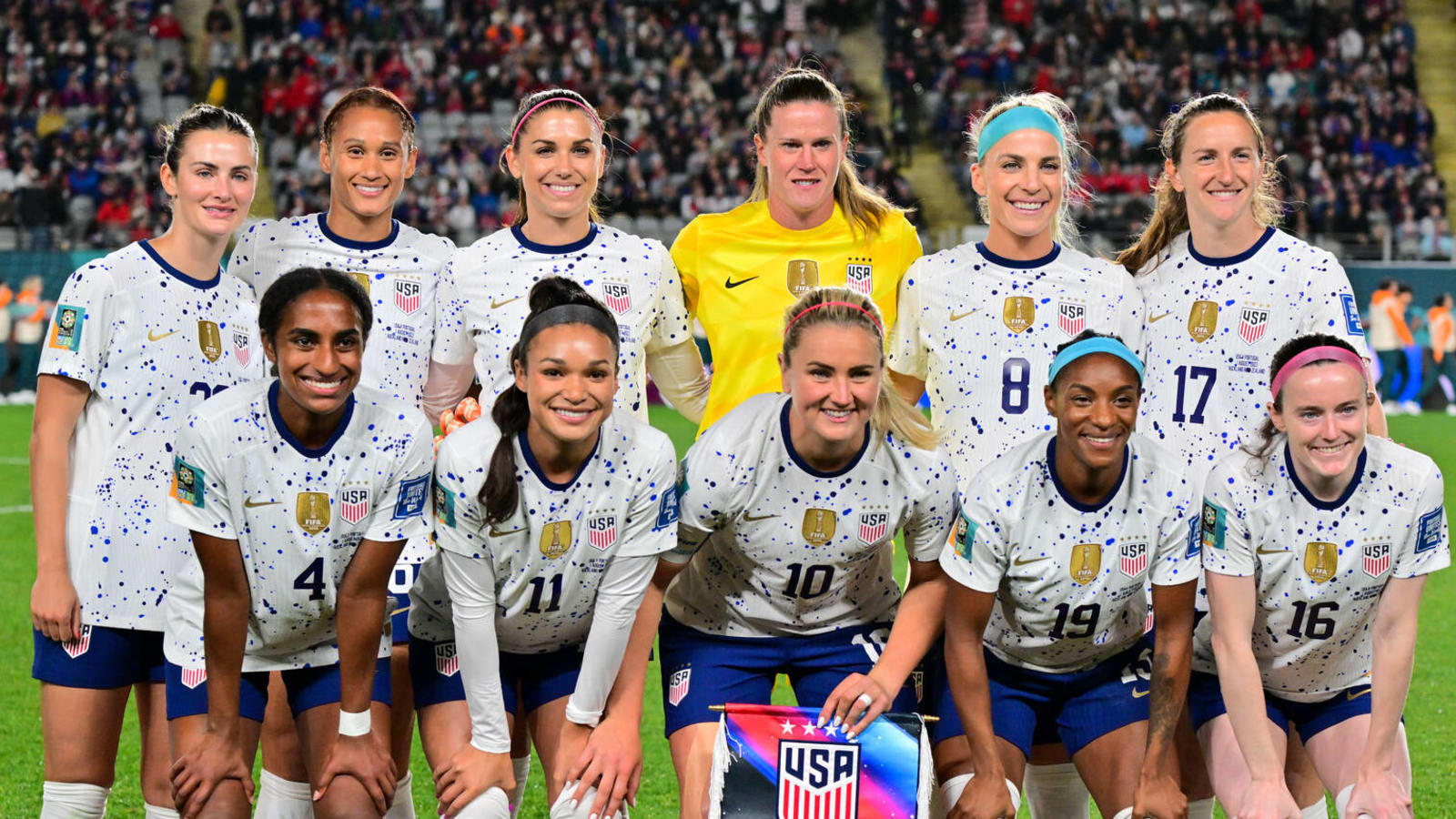
The tactical failures behind the USWNT's World Cup underperformance
The U.S. Women's National Team advanced to the knockout stages of the World Cup on Tuesday thanks to a stilted, embarrassing 0-0 draw with Portugal. The team started off its World Cup campaign with a slow but respectable 3-0 victory over Vietnam before putting in a gritty and aggressive performance to draw with the Netherlands. Three games, three lackluster showings: The USWNT managed to move on, but it did so by the skin of its teeth.
The world rankings aren't a fluke; the USWNT is the strongest side on the planet, no questions asked. So why has it been unable to break down teams like Portugal, Vietnam and the Netherlands? The answer lies not in the individuals on the field, but rather in the individuals on the sidelines: coach Vlatko Andonovski and his associates. They've settled on a specific tactical formation and refused to budge — and if they do the same thing in the knockout rounds, it could lead to an early tournament end for the USWNT.
But what's the story behind those tactics? What moves has Andonovski made and how did they cripple the USWNT?
The formation. Andonovski insists upon playing a 4-3-3 formation with the USWNT — that's four defenders, three midfielders and three attackers. It's a formation that can be fluid, flexible and attack-minded when done right, but it's easily exploited. With just three true midfielders, any opposing team can simply play four — or, in the case of the Netherlands, five — against the USWNT and overrun it in the center of the park.
Tactically astute coaches who love the 4-3-3 get around this weakness by "pivoting" some players when out of possession. Just look at Italian men's coach Roberto Mancini: His team won the 2021 European Championships by charging forward in a 4-3-3 with the ball and sinking back into a conservative, defensive 3-5-2 without it. Andonovski, though, makes no such concessions. It's 4-3-3 or bust, all game, regardless of the opposition.
The problem. If you want to maintain ball possession in soccer, you need to think angularly. Possession requires passes, after all, and if you think of each player as the base point of a shape, then each player needs at least two other open players to pass to in order to keep that shape alive. Much has been written about midfield "triangles" and "diamonds"; in essence, these shapes are simply tactical passing structures through which players keep ball possession.
Portugal played a four-person diamond of its own against the USWNT, and you can see how effective it was by taking a look at this graph of its midfield passing lanes:
Portugal vs USA pass network| #FIFAWWC
— Yash (@Odriozolite) August 1, 2023
Well this tells a story.
-Portugal's midfield diamond clearly visible, USA's midfield non existent
-Portugal's strong connections & possession ideas compared to USA's left side bias and reliance for progression & creation pic.twitter.com/9X65hdTitt
You can see Portugal's "diamond" on the right side of the field; its midfielders were able to pass and hold the ball freely and build up attacks from that location.
Check out the USWNT's map instead. With just three midfielders playing, a "diamond" was already off the table; the best it could hope for was a "triangle." And that's all it managed — with goalkeeper Alyssa Naeher as the base. The rest of the field is disconnected from one another, showing just how neutered the USWNT wound up becoming. Without the ability to pass through the park, every member of the USWNT offense was isolated.
The solution. The USWNT needs a complete rethink in midfield if it's going to survive the next round of the World Cup. But more bodies aren't necessarily the right answer; the USWNT needs the right players to step in and create new passing lanes. Defender Julie Ertz might be the perfect solution: She spent most of her career as a central midfielder and only stepped back into defense to cover for the missing Becky Sauerbrunn. If the USWNT can move Ertz up — and give a young, hungry defender the opportunity to cover for her in the center of the park — it could add experience and bite to its lightweight midfield in the next round.
Beyond that, the USWNT simply has to be more flexible. If it sees an opponent finding as much joy in one part of the field as Portugal did on that right flank, it needs to feel comfortable adjusting its shape to counter that. Many complained that defender Crystal Dunn looked awful against Portugal, but she was left on her own against that right-sided Portuguese onslaught — anyone would've looked awful in her shoes. She needed help from Ertz, Naomi Girma and Lindsey Horan that simply never came.
And finally, the USWNT needs to believe — if not in Andonovski and his tactics, then certainly in itself and its bonafides. No more powering through bad days; no more accepting a draw when a win is needed. Horan's growling, chest-pounding equalizer against the Netherlands was one of precious few bright spots in the USWNT's group-stage campaign, and it shone because it proved the team still had heart and fight. More of that, please. And less of this noncommittal, inflexible 4-3-3.
More must-reads:
- USWNT advances at World Cup despite disappointing 0-0 draw
- USWNT HC calls criticism of team celebration 'insane'
- The 'Most triple-doubles in the postseason' quiz
Breaking News
Customize Your Newsletter
 +
+
Get the latest news and rumors, customized to your favorite sports and teams. Emailed daily. Always free!

